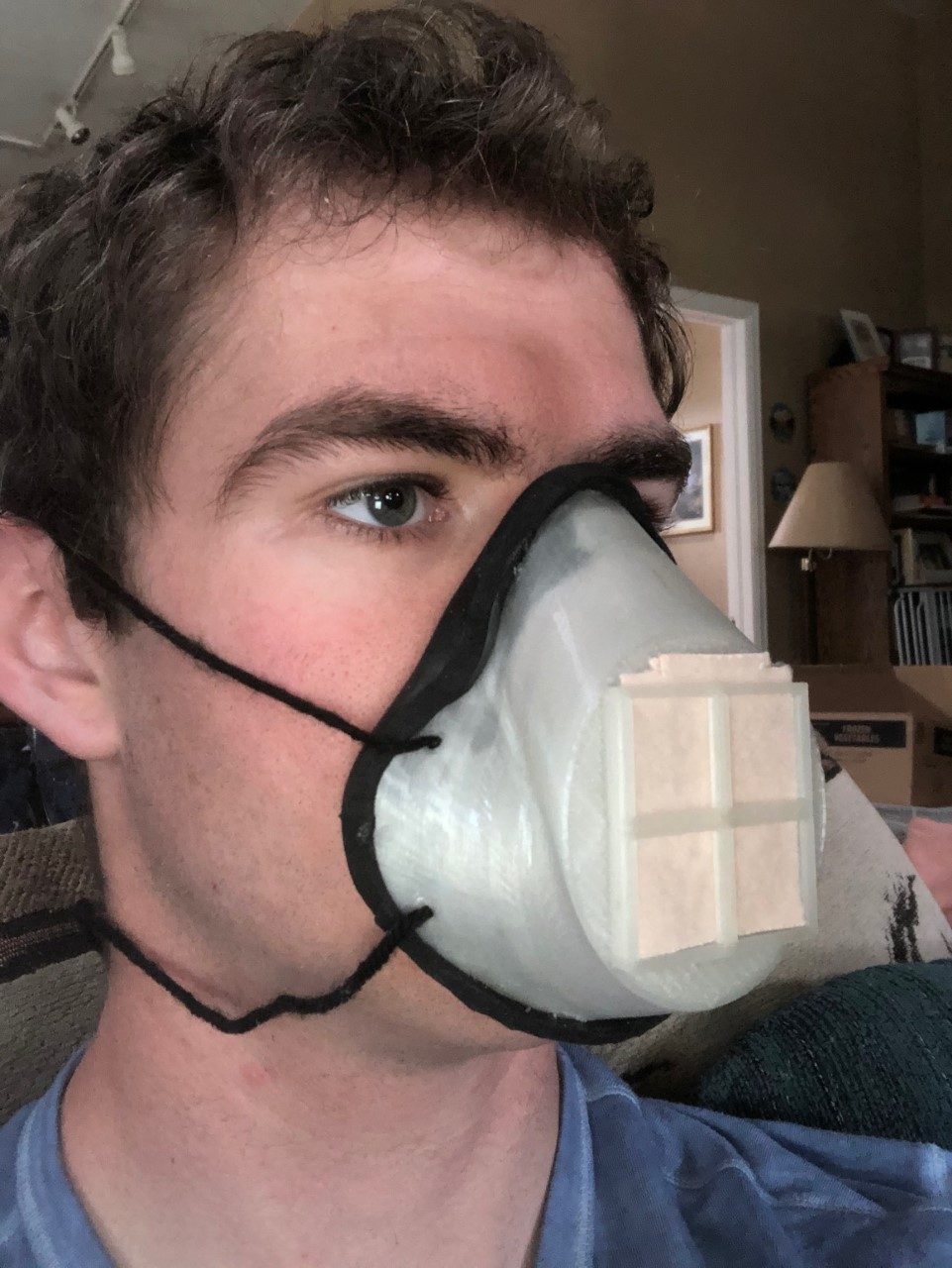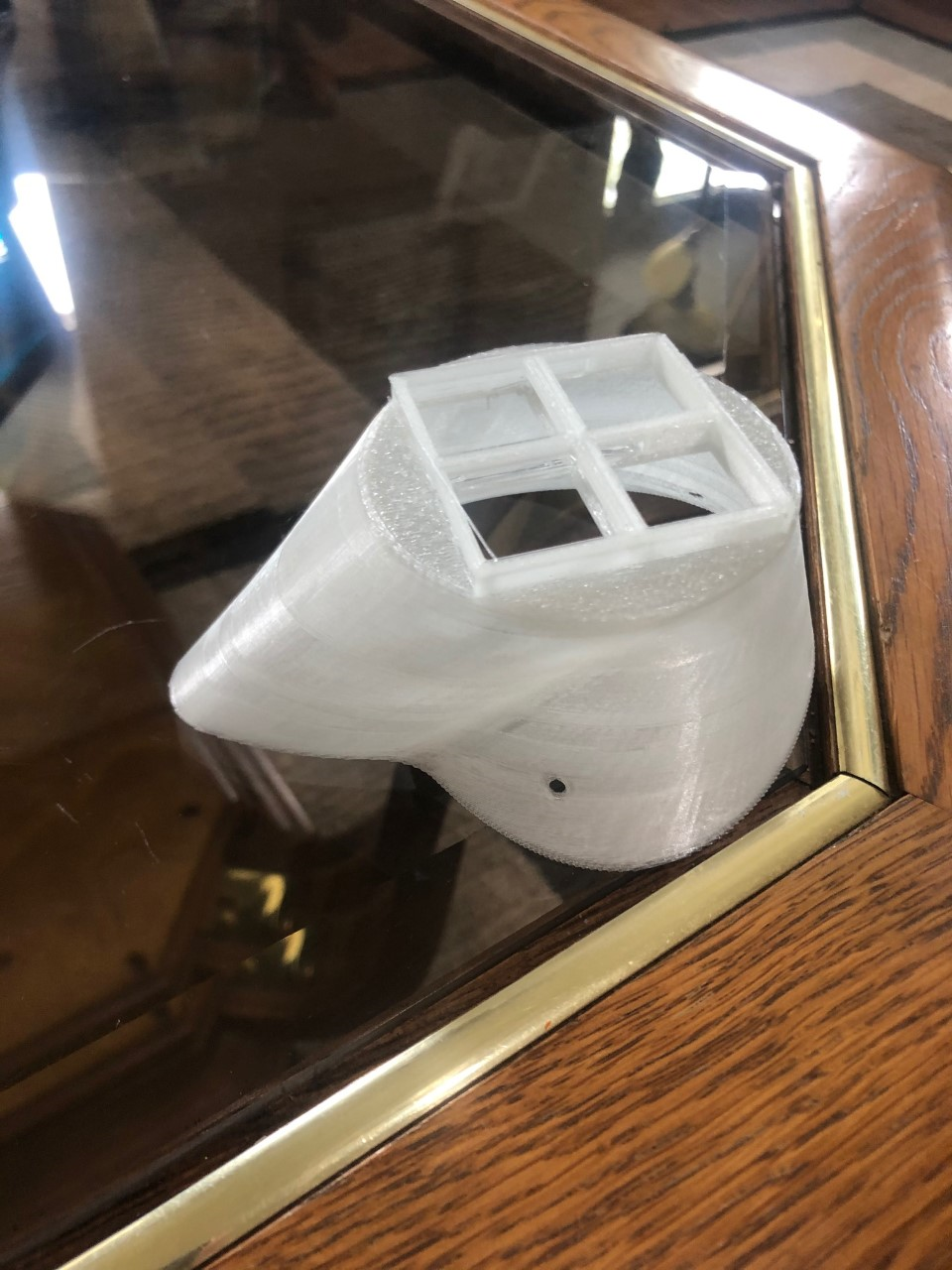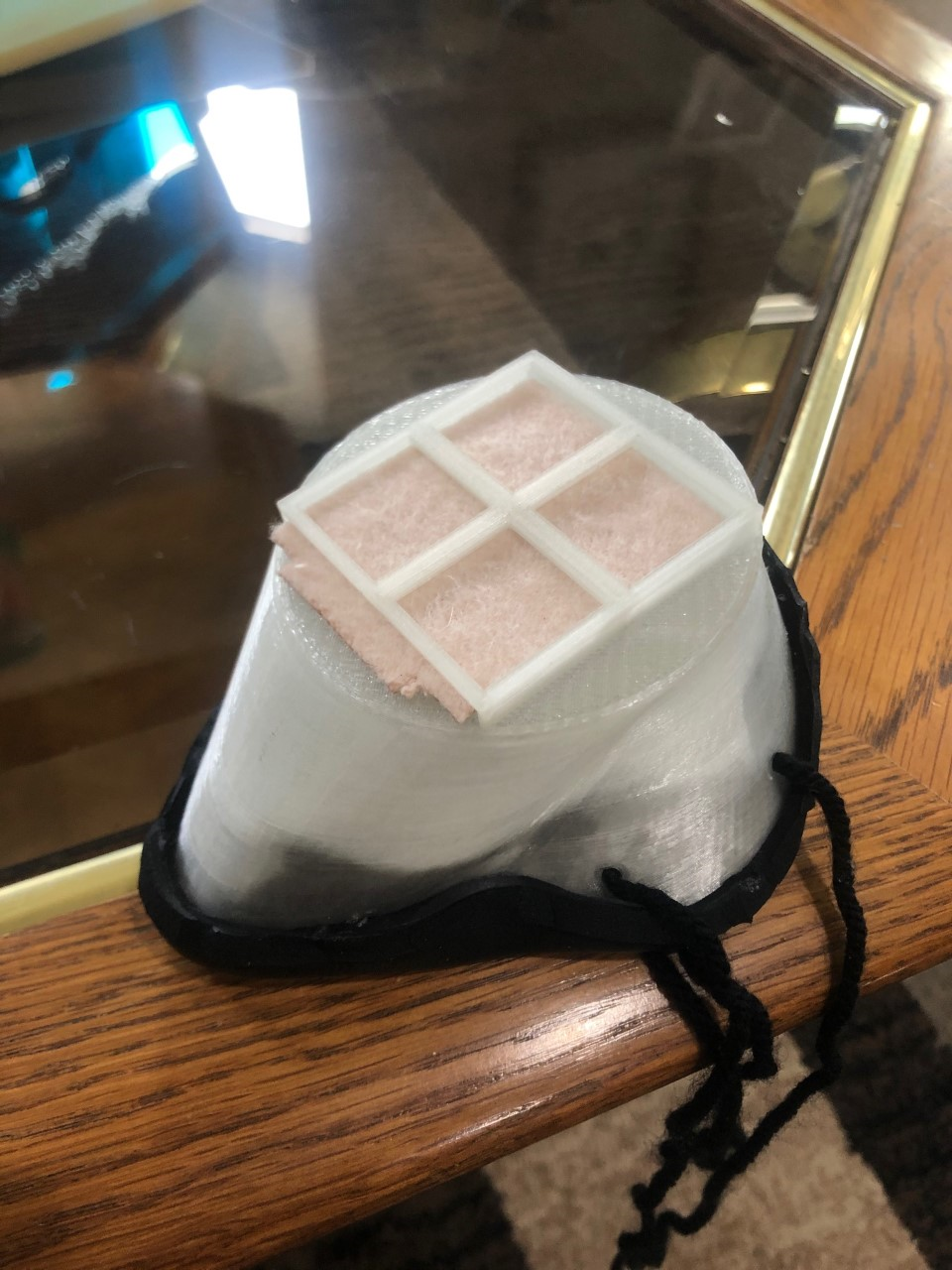3D Printed Mask

The purpose of this mask is to replace cloth masks and protect the user from airborne particles and bacteria. This instructable will show you how to create one for yourself at home
Supplies
The supplies you will need for this project:
- Any kind of plastic 3d printer filament
- 1 foot of flexible rubber tubing
- Quick drying super glue or hot glue
- Any kind of string or elastic bands
- An air filter sheet
The tools you will need are:
- A 3d printer
- 1 pair of scissors or a box cutter
- Sandpaper (optional)
Step 1: Printing the Mask

- Download the stl file of the mask onto your computer
- Open the file in whatever 3d printing program you use and have it convert it into a printable file
- Print out the mask with supports (this should take about 4-5 hours to print)
- Break off the support pieces attached to the mask after its done printing
- Sand off any loose pieces of plastic to desired smoothness
Downloads
Step 2: Attaching the Strings
The mask comes with 4 holes printed into the mask so no drilling is required
- Cut 4 strings of equal length 1 1/2 feet long
- Thread each string through one of the holes
- Tie a knot on each string once its through the holes to keep them in place
- (optional) Use a bit of super glue to ensure the strings stay put
Step 3: Attaching the Rubber Tubing
- Cut 1 1/2 feet of tubing
- Use the scissors or box cutter to cut open the length of tube
- Start near the top of the mask and glue the edges of where you cut open the tube to the mask (try to leave as much air in the tube as possible for more cushion and a better fit.)
- Do this around the entire edge of the mask until you get back to where you started
- Cut off any excess tubing and try to get as small of a gap as possible
- Wait for glue to fully dry
Step 4: Cutting the Filter

- Measure the slot for your filter which should be 1.6 inches wide (May be more or less if you scale the mask to a different size.)
- Mark out a 1.6x1.8 inch rectangle on your filter
- Cut out the rectangle
- Insert it into the filter slot
- Repeat steps 2-4 whenever your filter needs to be changed (CDC recommends changing them once they become moist)